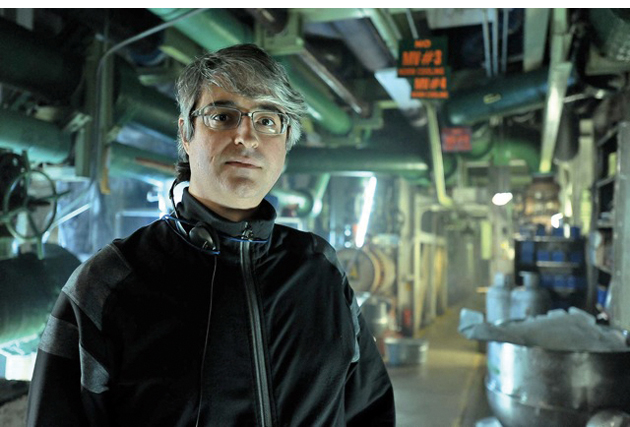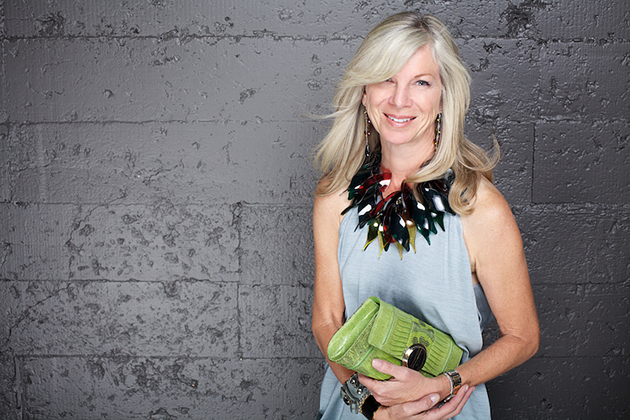Hate your day job? Or have circumstances forced you to move on? For these three Canadians, finding their dream occupation equalled finding their bliss.
We all know the feeling. It usually starts on Sunday evening. Perhaps it’s a nervous flutter in the gut or a sudden headache or you can’t sleep. The source of all this angst? Monday morning. And that means you have to go to work. And if it’s a job you hate or have grown weary of, it’s a slog to get there at all, let alone on time.
For a slew of Canadian men and women who have reached a certain age, it can be tough to look ahead to the next decade or more and picture oneself in the same company at the same desk staring at the same computer screen. Many people fantasize about quitting the job that has sustained them, even fulfilled them at one point, and starting fresh, following their dreams – let’s call it a career second act. Many people think about it; a few do it.
 Svet Rouskov, now in his 40s, was a gear head from a very young age, which is why he wound up studying mechanical engineering and straight out of university began working for a large automotive parts supply company. By all accounts he was a success, working his way up the chain of command beginning with design engineer, then project engineer, program manager, chief program manager and eventually landing on the executive team in one of the divisions. But something about Rouskov’s career trajectory wasn’t hitting the mark. “My day job was the dream job I should have wanted to do,” he explains. “But it wasn’t.”
Svet Rouskov, now in his 40s, was a gear head from a very young age, which is why he wound up studying mechanical engineering and straight out of university began working for a large automotive parts supply company. By all accounts he was a success, working his way up the chain of command beginning with design engineer, then project engineer, program manager, chief program manager and eventually landing on the executive team in one of the divisions. But something about Rouskov’s career trajectory wasn’t hitting the mark. “My day job was the dream job I should have wanted to do,” he explains. “But it wasn’t.”
It would take two separate but dramatic events for Rouskov to find his true calling. The first was a deadly car accident in 2000 that left him with dozens of broken bones and injuries severe enough he couldn’t work for close to a year. “I returned to my job, but in my subconscious I knew something was wrong.”
The second was an incident years later when he was a senior manager at a car parts company. He was woken by a phone call informing him that a part his team manufactured wouldn’t fit into the vehicles on the assembly line, and they were shutting down the factory. He arrived to find the foremen and others irate and threatening. One man was so frustrated he threw a car part at him. “In the end, it wasn’t our part or our problem. They had changed something in the car without telling us, and then our part didn’t fit.” But the event unsettled him enough that when he drove home he couldn’t sleep, so he did what had until this point only been  a hobby: he wrote. “I sat down and wrote for a couple of hours. When my wife got up, she asked what was going on,” he explains. Melissa listened and then uttered the epiphany he needed. “She said, ‘Stop doing what you hate in life and start doing what you love in life. It seems you like to write. Maybe you should think about that some more,'” Rouskov continues. “The moment she said that something clicked. I just didn’t want to do my job anymore. The fire was lit.”
a hobby: he wrote. “I sat down and wrote for a couple of hours. When my wife got up, she asked what was going on,” he explains. Melissa listened and then uttered the epiphany he needed. “She said, ‘Stop doing what you hate in life and start doing what you love in life. It seems you like to write. Maybe you should think about that some more,'” Rouskov continues. “The moment she said that something clicked. I just didn’t want to do my job anymore. The fire was lit.”
Rouskov says he always wrote short stories, referring to them as “therapy.” But after his wife’s words, he thought about his love of movies and TV and decided to try and learn to write a screenplay. Being an engineer by trade made him approach it with a practical eye. “I started researching. I read a bunch of books on screenwriting and wrote my first screenplay,” he says. He entered it in an online contest, and it finished in the top five out of 1,800 scripts, winning first place in the science fiction category. That win came with some meetings with industry professionals who were encouraging about his talent. But the film industry is notoriously tough to crack. So he continued taking screenwriting classes at the University of Toronto’s continuing education program all while still working at his day job. But that would soon change.
“I like to say the reason I did quit my day job was a combination of recklessness and pragmatism combined,” Rouskov says. “I had to be reckless enough to say I was going to throw away a career I’d spent years building and crafting. But I also had to be pragmatic enough to figure out a way to do it that wasn’t completely idiotic.”
His wife, who has a successful career in marketing technology, was very supportive, and Rouskov had his own savings. “On the reckless side, I did jump off the bridge and quit. But on the pragmatic side, I quit with a plan. I’m very fortunate that I had the means to do this.”
Once he quit his job, he decided to take an active role in his new career by starting to know other filmmakers. Rouskov attended the Toronto International Film Festival and watched the short films. He met one of the directors, and together they made a short. Rouskov wrote and executive produced it. “It was my film school,” he adds.
Then he learned about the Canadian Film Centre, founded in 1988 by Canadian film director Norman Jewison, and the institute’s many programs including the Cineplex Entertainment Film Program, a six-month intensive program where five writers, director, producers and editors are chosen each year to work on original projects. In 2010, Rouskov applied and was accepted. It proved to be the turning point. “That was a very important spot in my career. It was the moment I thought, ‘I can do this.'”
Today, Rouskov has two feature film credits and two that are scheduled to go to camera soon. And he’s expanded his focus to television. “I was not as satisfied telling a story in two hours as I am telling a story in 10, 20 or 40 hours,” he explains. But landing one of the highly sought-after seats in a writer’s room is tough. So, ever the entrepreneur, he wrote three pilots. “All three have been optioned and are being developed with producers, two with Canadians and one in L.A.”
He knows he’s lucky but he also knows it’s been a lot of hard work and continues to be. “The analogy I use is screenwriting is like pushing a boulder up a hill: it’s all physics. You are at the bottom, and it’s hard to get the boulder started up the hill. It’s slow, but you keep pushing,” he explains. “Then you get to the top of the hill, and two things can happen. It will either roll back and crush you or it will roll forward down the hill and pick up momentum. But, low and behold, there’s another hill and then another. I’ve learned this lesson over the last three to four years. There is no promised land. There’s just more hills but, if you build enough momentum, you can keep going over those hills, and it gets easier.”
While Rouskov made detailed plans to make his career change a success, others follow their hearts, literally. Take Karen Ashbee, now in her 50s, who had a glamorous and lucrative career in advertising sales at Flare magazine in Toronto when in 1998, she gave it all up and moved to Calgary to be with her orthopedic surgeon husband, Dr. Paul Salo.
“My husband is a scientist, not just a surgeon, and medical research in his field of joint innervation and arthritis wasn’t at the forefront of Toronto’s medical scene, but it was in Alberta where he had done his residency,” she explained. “I looked at how important his work was, not only to him but also how meaningful it was to the public at large and decided we had to relocate.”
 Ashbee says she relishes a challenge and decided that, while such a move seemed drastic to her friends, it gave her the chance to reinvent. “I never knew what I wanted to be when I grew up,” she adds. Though her degree in marketing and economics made her marketable in the industries she worked while in Toronto, she had something else in mind for Calgary. “I decided to reinvent on a much larger scale – on a career front and a social front leaving my community behind and having to make new friends and living in the West.”
Ashbee says she relishes a challenge and decided that, while such a move seemed drastic to her friends, it gave her the chance to reinvent. “I never knew what I wanted to be when I grew up,” she adds. Though her degree in marketing and economics made her marketable in the industries she worked while in Toronto, she had something else in mind for Calgary. “I decided to reinvent on a much larger scale – on a career front and a social front leaving my community behind and having to make new friends and living in the West.”
The precise nature of her reinvention came about unexpectedly. “The day I handed in my notice, Suzanne Boyd [then editor-in-chief of Flare, now editor-in-chief of Zoomer] immediately asked if I’d be the western correspondent for Flare and I said yes,” she explains. “With that assignment, I could already define myself, so when I’d meet people in Calgary who would ask me what I did, I had an answer.”
Despite not having a journalistic background, Ashbee seized the opportunity. Initially, her role was to be the magazine woman in Calgary – keeping it in the know about the city’s stylish movers, shakers and happenings. But soon she expanded into writing the pieces for Flare. “I had to learn on the job and find my voice as a writer, and that was trial and error and working with editors,” she says.
But Ashbee quickly became a go-to writer for other magazines both in the east and the west. “It was easy to identify stories that would be relevant to the east. And no one was pitching them.”
Today, she’s expanded beyond her freelance writing career to include consulting to her husband’s medical practice, a marketing consultant for fashion industry clients and being a horsewoman (she is a judge for the equestrian sport of dressage).
While her second act required a lot of adjustment, she says it was the right decision. As for others who are making a similar change in their life, whether it be by choice or not, Ashbee has this advice: “It’s very easy to go back to what you know. Don’t do that. Resist,” she says. “Don’t cave in a weak moment. And don’t be afraid of making mistakes and asking people to help you. Network as much as you can and, if possible, volunteer in your new field to get started.”
For Caryn Colman, also in her 50s, her second act began not at work but with the dissolution of her marriage. She and her husband owned a wilderness lodge and canoe outfitter in North Eastern Ontario. While they agreed that she would remain a silent partner in the business, Colman needed to decide what was next for her. “I really wanted to do something using my skills and talents and passion, which everyone hopes for, and make a difference to the community.”
 A chef, outdoor educator, program director and culinary activist, she chose an alternative path to self-discovery. A lifelong equestrian, Colman bought a truck camper and horse van and, in November 2014, headed south with her remaining “family,” two cats and a horse, for a six-month journey through the U.S.A. Cats Sophie and James and her mare Georgia Grace, an 18-year-old Clydesdale-thoroughbred cross, travelled with her through Michigan, Ohio and into Kentucky and Tennessee, her ultimate goal being Florida. Her plan was to work as a chef and equine massage therapist along the way in exchange for a place for them to stay.
A chef, outdoor educator, program director and culinary activist, she chose an alternative path to self-discovery. A lifelong equestrian, Colman bought a truck camper and horse van and, in November 2014, headed south with her remaining “family,” two cats and a horse, for a six-month journey through the U.S.A. Cats Sophie and James and her mare Georgia Grace, an 18-year-old Clydesdale-thoroughbred cross, travelled with her through Michigan, Ohio and into Kentucky and Tennessee, her ultimate goal being Florida. Her plan was to work as a chef and equine massage therapist along the way in exchange for a place for them to stay.
Unlike Rouskov who ensured he had a firm plan for change, Colman approached her trip like she was running away to the circus. “I naively thought I could go to the States and I could chef and do equine massage and I could paint [she’s also an artist], but reality was I didn’t know what my stops were,” she explains. “So once I was at a place, I had to find out where I was going next based on my route south. I did some drawing, massage, and I cooked for people a little bit.”
Her adventure had its share of tense moments, too. She got lost riding her horse in Tennessee’s Big South Fork wilderness. “It was dusk, cold and raining, and I had a meltdown.” But then something extraordinary happened. “Four white deer jumped out in the forest in front of me. Seeing one is very rare; here were four. I took it as a sign.”
But following the incident in the woods, she headed onto the road again. Her destination was Bandy Creek, a public barn in another part of Big South Fork. However, once again, Colman found herself lost, this time on the highways and roads. “This state trooper stops me,” she says, wondering if her taillight was out. “Turns out he knew I was lost, and he’s off duty, so he asks me, ‘Are you crazy to be staying here by yourself in a barn?'” The trooper insisted she follow him to his place where his wife and their own horses lived. “I stayed there about a week. They were some of the nicest people I’d ever met.”
Travelling with an animal the size of a horse does tend to stand out, and that was the point. “The real adventure was the horse leading me to people and stories I’d never have found without her,” Colman adds. “Georgia Grace was the one taking care of me.”
Now back in Toronto where the rest of her family lives including her 23-year-old daughter, Emily, Colman is focusing her talent and passion for food by serving the growing elders’ demographic using wholesome, healing food.
“I saw that mass food production was the way that industry [seniors homes] was going, and that this was wrong.” Part of her strategy is to build community within senior residences by cheffing and designing programs such as “lunch and learn,” food workshops and community meals. “When people eat and make food together, they aren’t just eating. There’s less alienation and isolation. It makes people happy, and they nourish each other on so many levels like building friendships,” she explains. “I did a lunch-and-learn around bees. I brought some bees to the residence, a beekeeper came to talk about bees and I created a menu around honey.”
Colman also leads a workshop she calls “looking and cooking,” where she takes the seniors outside to pick herbs and wild edibles, and then they create a meal together. She continues to work with local food for positive influence. “When you know where your food comes from, when you have a relationship with food, you can connect with nature. Urban people desperately need that hook.”
Of course, Colman continues to ride Georgia Grace, now living at a stable just north of Toronto, and the adventures continue. “I go out riding and harvest wild leeks, apples, walnuts and wild garlic.” As for this being her second act, Colman is quick to point out she isn’t done yet. “Shakespeare has three acts.”
